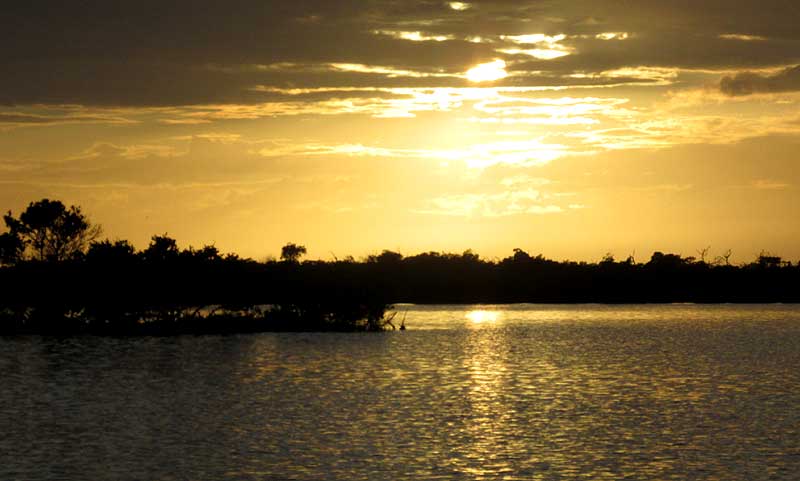Characteristic aquatic PLANTS & plant-like things:
"SEAGRASSES"
animals that might look like algae
ALGAE:1
- GREEN
- BROWN/ GOLDEN
- ± WHITE
Characteristic aquatic ANIMALS:
NOTE:
Especially at the estuary's mouth at San Felipe and across from Río Lagartos where the
canal cuts through the thin finger of land separating the estuary from the Gulf, most
organisms found in the estuary may also occur in the Gulf. Therefore, many organisms found
in the estuary are listed on our
Marine Page and many others are
not listed at all. Also, populations of individual species vary strongly from year to
year. Finally, we can see that the estuary's biota is changing overall, so these lists may
be a little out of date.
Most numerically abundant fish species, (2004-2008)2:
Fish providing most biomass (2004-2008)2:
Fish in least salty water (2004-2008)2:
Fish in most salty water and water with least oxygen (2004-2008)2:
A 2010 description of Ría Lagartos's waters by ecologists
Herrera-Silveira & Morales-Ojeda:3 "Because this
system is located within a watershed infuenced by agriculture and cattle farming,
groundwater is contaminated, and early signs of eutrophication and pollution have been
observed. The impact of SGD-derived pollutants may be magnifed by the long water residence
time (about 450 days)"
At the end of May, 2015, on the afternoon of the first day after the
first rain of the rainy season, in certain spots the estuary smelled strongly of cow
manure, though the wind was not from the ranchlands to the south. Jim Conrad suspects that rainwater from the southern ranchlands arrived in the estuary via
underground rivers, carrying the manure's odor, and who knows what bacteria and chemicals?
Endemic fish species:
Specially protected fish:
Comercially most important fish
species:
Other Important AQUATIC ANIMALS
SALINITY & FISH: The Peralta-Meixueiro study referenced below2 found that in the Ría Lagartos Estuary species diversity of fish was lower than that in
other similarly located estuaries. The suggested reason for this is that, more than in
other similar estuaries, the waters of Ría Lagartos Estuary are especialy high in salt
content throughout the year and throughout the lagoon system. Salinity inside the estuary
rapidly increases toward the interior (from west to east). The Valdes & Real study
referenced below4 found that during the dry season the estuary's average salinity was over
69 PSU (seawater's is around 35.5 PSU), and in some parts of the estuary's inner zone it
was 147 PSU -- over 3.5 times saltier than sea water.
References:
1
G Morales y I Ortegón, Distribución de la flora ficológica en la Costa de Yucatán in 3er Simposium sobre el Conocimiento de los Recursos Costeros del Sureste del México, Universidad Autónoma de Yucatán. Mayo 29, 2013-Mayo 30, 2013
2Peralta-Meixueiro, Miguel Angel et al,
"Evaluación Espacio-temporal de los Ensamblajes de Peces en el Sistema Lagunar de
Ría Lagaratos, México" in Proceedings of the 63rd Gulf and Caribbean Fisheries
Institute, November 1-5, 2010, San Juan, Puerto Rico
3 Jorge A.
Herrera-Silveira & Sara M. Morales-Ojeda, "Subtropical Karstic Coastal Lagoon
Assessment, Southeast Mexico The Yucatan Peninsula Case" in Coastal Lagoons
Critical Habitats of Environmental Change, Edited by Michael J . Kennish and Hans W .
Paerl, CRC Press 2010
4 David Valdes & Elizabeth Real, "Nitrogen and phosphorus in water and
sediments at Ria Lagaratos oastal lagoon, Yucatan, Gulf of Mexico," Indian
Journal of Marine Sciences Vol. 33(4), December 2004.

